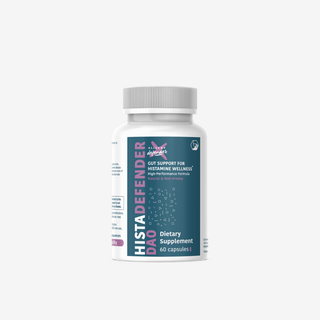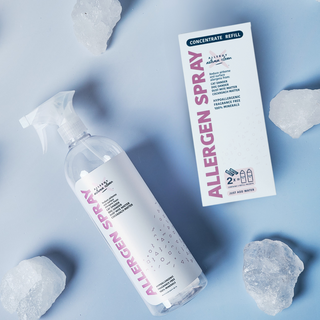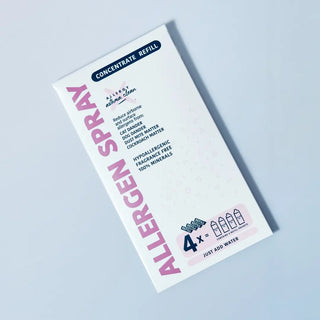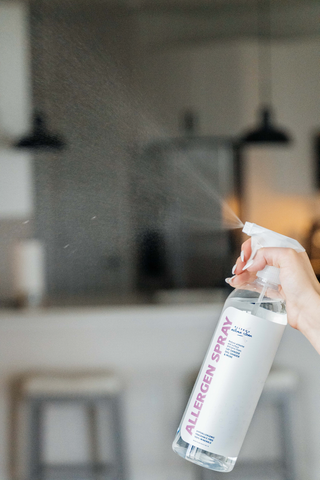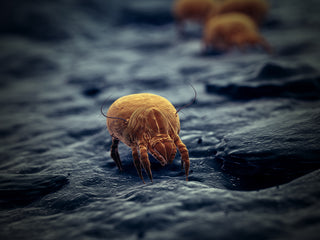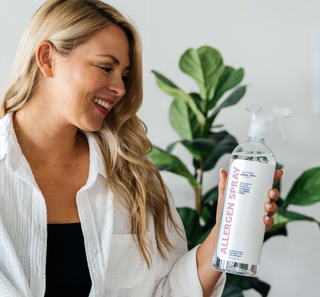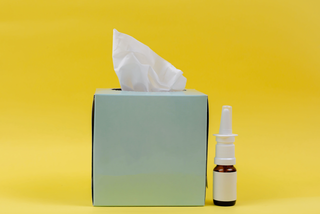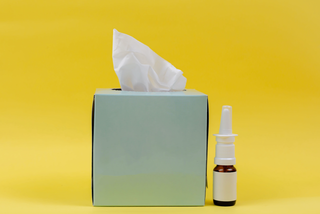What is Diamine Oxidase and How Can it Help You Feel Better?
If you're not feeling well, you've done everything you can think of to get better, including going to health professionals, it just might be time to dig deeper and look at the role histamine, yes, histamine, could be playing in your body. Looking at histamine levels is fairly new, but the results, if it is histamine, are astounding at improving your symptoms and feeling of wellness.
Diamine oxidase (DAO) can help your body reduce histamine levels. It's a key enzyme responsible for breaking down histamine, particularly in the digestive tract. By breaking down histamine from foods, DAO helps prevent excessive histamine from entering the bloodstream and causing you various uncomfortable symptoms. When DAO activity is lacking, histamine buildup may occur, resulting in a range of symptoms (such as allergies, itching, swelling, redness, and others) that can affect your quality of life.
DAO is primarily produced in the small intestine, as well as in the kidneys. Its main role is to downgrade dietary histamine before it is absorbed into your bloodstream. DAO converts histamine into an organic compound called imidazole acetaldehyde, which is then further metabolized and eliminated. This process helps keep histamine at safe levels and prevents symptoms in most people.
To put it in simpler language:
Imagine your body is like a big house, and histamine is like a tiny, speedy messenger that runs around, telling different parts of the house what to do. Sometimes, there's too much of this messenger running around, which can cause problems like itchy skin, runny nose or worse symptoms.
That's where DAO ("dee-ay-oh") comes in! DAO is like a clean-up crew. Its job is to catch histamine and change it into something else that can't cause trouble.
When DAO catches histamine, it turns it into a new, harmless compound called imidazole acetaldehyde. Think of imidazole acetaldehyde as a "broken" messenger. It can't run around and cause problems anymore.
Once histamine is changed into imidazole acetaldehyde, your body has special ways to get rid of it, kind of like throwing out the trash. This way, your body doesn't have too much of that speedy histamine messenger causing a commotion, so you start to feel better.
Histamine Intolerance: It's More Than Just Allergies
Histamine intolerance occurs when your body cannot efficiently break down histamine, leading to its buildup. Unlike food allergies, histamine intolerance is not an immune reaction but is primarily due to reduced enzyme activity, most notably, a DAO deficiency.
Do You Suffer From These Common Symptoms of a Histamine Buildup?
-
Headaches and migraines
-
Digestive issues (bloating, diarrhea, stomach pain)
-
Skin reactions (hives, itching, flushing, swelling)
-
Respiratory symptoms (nasal congestion, asthma-like symptoms)
-
Heart effects (low blood pressure, arrhythmias, rapid heart rate)
-
Tiredness and sleep disturbances
-
Anxiety and mood changes
Symptoms often appear within 30 minutes to several hours after consuming histamine-rich foods, making diagnosis challenging. For a list of histamine-rich foods, read on :)
What Causes DAO Deficiency?
Factors that can reduce DAO activity in your body include:
-
Genetics
-
Certain medications (antibiotics, antidepressants, painkillers, and alcohol can inhibit DAO)
-
Digestive disorders (inflammatory bowel disease, celiac disease, small intestinal bacterial overgrowth)
-
Nutritional deficiencies (vitamin B6, vitamin C, copper, zinc)
-
Hormonal fluctuations (estrogen can inhibit DAO, affecting symptoms during menstrual cycles or pregnancy)
Foods High in Histamine
-
Aged cheeses and fermented dairy
-
Cured and processed meats
-
Fermented foods (sauerkraut, kimchi, pickles)
-
Alcoholic beverages (especially wine and beer)
-
Aged and smoked fish
-
Tomatoes, spinach, eggplant
-
Chocolate and cocoa products
Natural Ways to Support DAO Function
Dietary Strategies
A low-histamine diet—reducing or avoiding high-histamine foods—can help manage symptoms. Individual triggers vary, so keeping a food diary (writing it down on paper or your phone) and following an elimination diet are often recommended.
Did you know handwriting has benefits versus typing it into your phone? It improves your problem-solving skills, writing helps relax your mind, and your creativity will increase. If you're trying to solve your health issues, this simple act could give you an 'aha' moment to resolve your problem.
Lifestyle Modifications
Managing stress, getting enough sleep, and engaging in regular exercise support overall health, although the direct effects on your DAO are not well studied. However, avoiding DAO-inhibiting substances, such as alcohol and certain medications, can be beneficial.
DAO Supplements: A Good and Powerful Solution
Struggling with histamine overload? Don't want to give up some of your favorite foods? You're not alone!—We made HistaDefender DAO for people just like you.
This isn’t just another DAO supplement. HistaDefender DAO is crafted with care and specific ingredients to help support your body’s natural ability to break down histamine.
How to Determine if You Have a DAO Deficiency and Histamine Intolerance
Test? Yes, tests are necessary. Tests include:
-
DAO activity tests (measure DAO levels in blood, but their reliability is debated)
-
Histamine/N-methylhistamine ratio in urine
-
Comprehensive stool analysis (to assess gut health)
However, DAO activity in blood does not always correlate with symptoms, so clinical evaluation is crucial. While a stool analysis sounds gross, it can give you health information to keep you on track (such as the health of your gut microbiome) to keep you well.
Summary
Histamine intolerance can cause a range of symptoms that prevent you from feeling your best. Unfortunately, if left unaddressed, symptoms can persist for years, leaving you feeling unwell. Your body's inability to use DAO effectively is the cause. You can manage symptoms by combining dietary changes with addressing underlying health issues, and, if necessary, supplementation.
The goal is to improve DAO function and gradually reintroduce foods as tolerated, ideally with the guidance of a professional.

